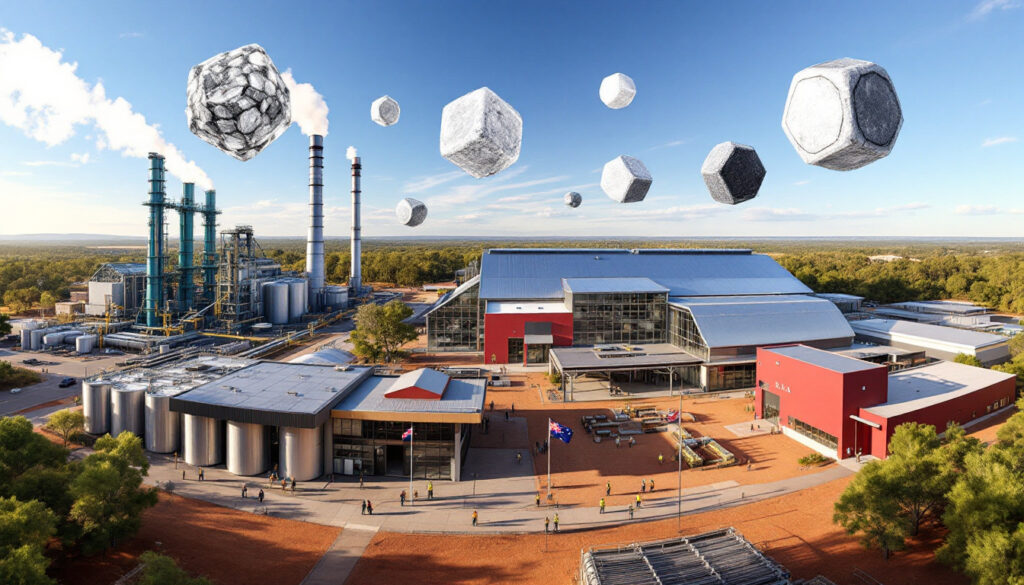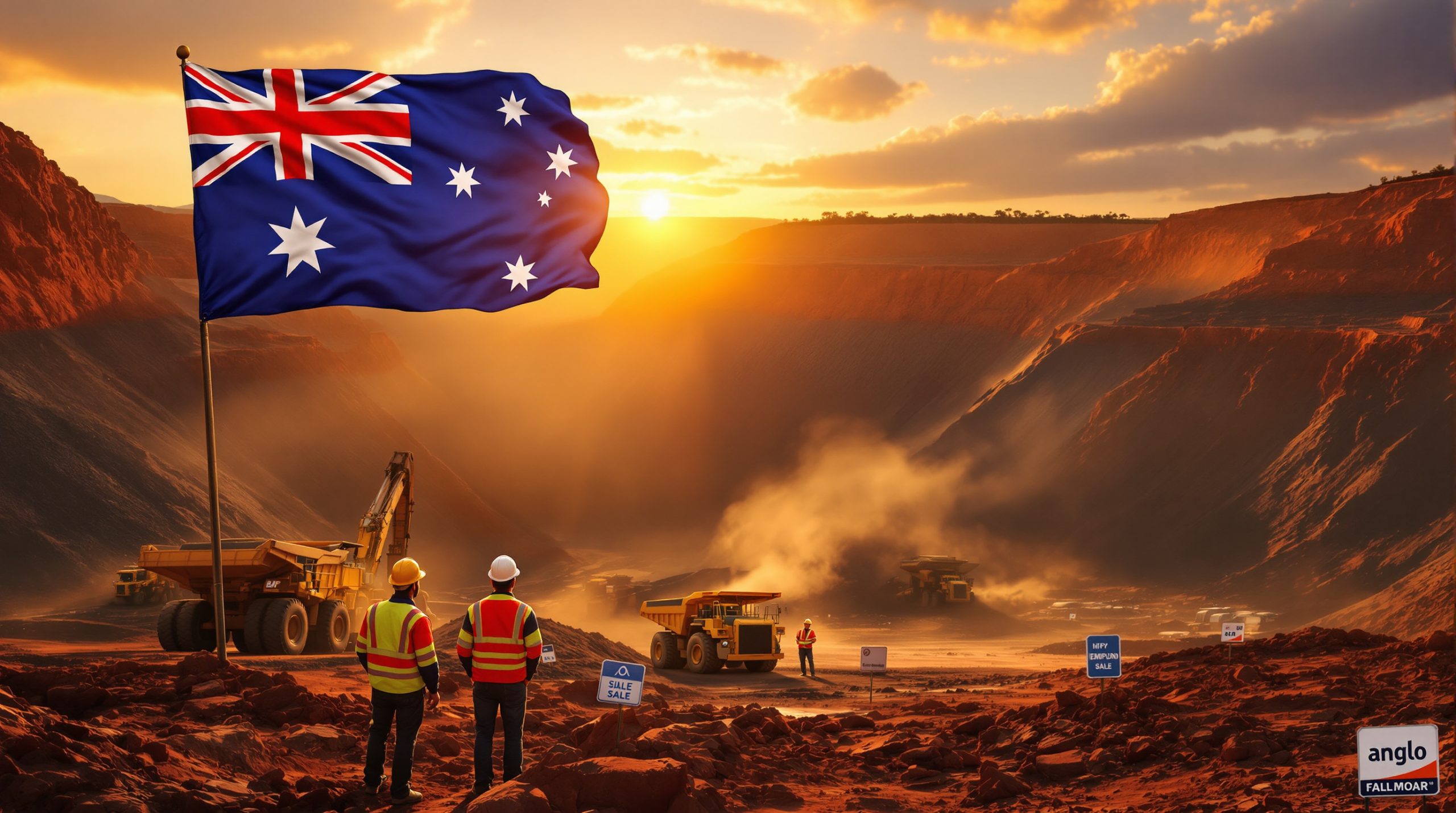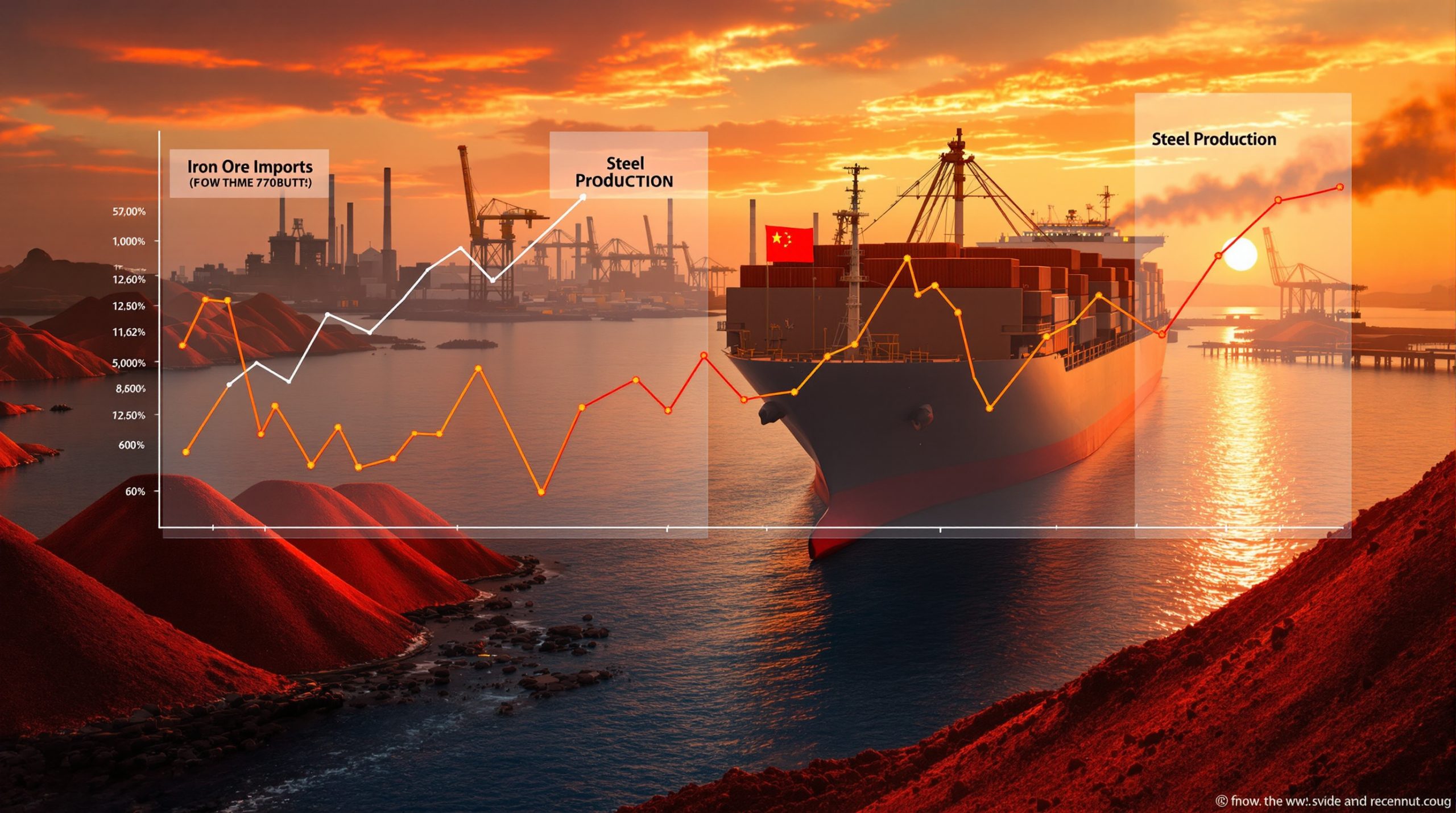What is the Collie Just Transition Plan?
Understanding Collie's Economic Shift
The Western Australian Government has committed over $662 million to Collie's industrial transition, marking a significant shift in the region's economic foundation. This substantial funding supports the comprehensive "Just Transition for Collie" initiative, designed to transform the area's coal-dependent economy into a diverse industrial hub. The primary goal of this ambitious plan is to attract innovative industries while creating substantial training opportunities for local workers.
The transition addresses both immediate economic needs and long-term sustainability goals as global demand for thermal coal continues to decline. This strategic pivot aligns with Australia's broader commitment to reduce greenhouse gas emissions by 43% below 2005 levels by 2030, positioning Collie at the forefront of industrial decarbonization efforts as part of the clean energy revolution.
Premier Roger Cook has been vocal about the importance of this transformation, stating: "Hitting these key milestones is another step forward to securing Collie's future as a major new industrial hub." His endorsement underscores the government's dedication to ensuring Collie's prosperity beyond its coal-mining heritage.
Key Components of the Transition Strategy
The Collie transition strategy centers on establishing a green iron and steel industry, leveraging Western Australia's abundant natural resources and existing industrial infrastructure. This initiative forms a crucial part of the broader "Made in WA" economic development plan, which aims to increase domestic manufacturing and processing capabilities.
The strategy includes repurposing existing coal industry assets, including the 330MW Collie Power Station and associated transportation networks. The Coolangatta Industrial Estate has been revitalized to accommodate new manufacturing ventures, demonstrating effective adaptive reuse of industrial zones.
Workforce development stands as a central pillar, with comprehensive retraining programs focused on equipping approximately 1,200 former coal workers with advanced manufacturing skills. The government has allocated $18 million specifically for vocational education partnerships with TAFE colleges, ensuring workers can transition seamlessly to emerging industries.
How is Collie Becoming a Green Steel Hub?
Australia's First Low Emissions Steel Production
Green Steel of WA has reached a significant milestone, securing all necessary approvals to conduct detailed feasibility studies for Australia's first low emissions steel production facility. This groundbreaking project includes plans for a 2.5 million tonne per annum direct reduced iron plant alongside a 1 million tonne electric arc furnace steel mill, positioning Western Australia at the cutting edge of green manufacturing.
The state government has contributed $2.7 million toward the development of this initiative, enabling the completion of front-end engineering design work. This critical phase has confirmed the technical viability of using Western Australia's magnetite iron ore deposits with renewable hydrogen as the reducing agent, potentially reducing steelmaking emissions by up to 91% compared to conventional methods.
The project has now entered its final investment decision phase, with energy requirements expected to be met through a dedicated 500MW hybrid renewable energy system combining solar, wind, and battery storage. This infrastructure investment creates a replicable model for other industrial decarbonization efforts across Australia.
Economic and Environmental Benefits
The establishment of a green steel cluster in Collie promises substantial economic advantages, with projections indicating the creation of approximately 1,800 direct manufacturing jobs by 2030, supplemented by an additional 2,500 positions in supporting industries. These employment opportunities represent high-value roles in advanced manufacturing, offering career pathways for workers transitioning from traditional industries.
Environmental benefits are equally significant, with anticipated annual emission reductions of 4.3 million tonnes CO2-equivalent through displaced coal-based steel imports. Lifecycle analysis indicates that Collie's green steel will have 72% lower embodied carbon compared to conventional products, making it highly competitive in markets with carbon border adjustment mechanisms.
The inclusion of Western Australia's first steel recycling facility further enhances the project's sustainability credentials. This complementary operation will process approximately 150,000 tonnes of scrap metal annually, recovering 98% of material inputs through advanced sorting technologies and significantly reducing landfill pressures in the South West region. These innovations are part of broader decarbonising steel industry efforts gaining momentum across Australia.
What New Industries are Developing in Collie?
Sustainable Magnesium Production
Magnium Australia has successfully established an operational pilot plant in Collie's light industrial area, marking a significant advancement in domestic critical minerals processing. The facility utilizes innovative carbothermic magnesium metal technology to produce 99.95% pure magnesium from local magnesite deposits, reducing energy consumption by 40% compared to traditional production methods.
With $7.5 million in support through the Collie Industrial Transition Fund, this project addresses a strategic gap in Australia's manufacturing capabilities. The facility's proprietary process achieves production costs of approximately $2,800 per tonne, compared to the global average of $3,150, creating a competitive advantage in international markets.
Magnesium's versatile applications span numerous high-value sectors, including aerospace components (accounting for 37% of projected output), automotive lightweighting (29%), consumer electronics, sporting equipment, and advanced construction materials. By establishing domestic production capacity, Australia reduces dependence on Chinese suppliers who currently control approximately 85% of global magnesium production.
Advanced Graphite Processing
International Graphite (ASX:IG6) has initiated a comprehensive Feasibility Study for its Battery Anode Material Facility, supported by $12.5 million in government funding. This project aims to process 50,000 tonnes of mined graphite annually into coated spherical graphite (CSPG) for lithium-ion batteries, utilizing proprietary purification techniques that achieve 99.995% carbon purity.
The facility's strategic importance extends beyond battery applications, with diversified product streams including high-purity graphite for nuclear reactors (representing 15% of planned production) and graphene precursors for advanced composites. At full capacity, the plant could supply components for approximately 2.5 million electric vehicle batteries annually, highlighting the battery graphite potential within Australia's resources sector.
This development demonstrates growing industry confidence in Collie's Coolangatta Industrial Estate as a hub for advanced materials processing. Graphite serves dual critical roles as both an essential anode material in lithium-ion batteries and as a high-performance refractory material in metal production, positioning Collie at the intersection of renewable energy and advanced manufacturing supply chains.
Energy Storage Manufacturing
Tesla's battery re-manufacturing facility represents one of the most significant investments in Collie's industrial transformation. Currently under construction, the $450 million facility is scheduled for completion by October 2025 and will specialize in servicing, repairing, and renewing Tesla's battery products, including their utility-scale Megapack storage systems.
Each Megapack unit stores over 3.9 megawatt-hours of energy—enough to power approximately 3,600 homes for one hour during peak demand periods. These sophisticated energy storage systems play a crucial role in grid stabilization, eliminating the need for gas peaker plants and helping prevent outages during periods of high electricity demand.
The facility incorporates AI-driven diagnostic systems that improve battery management efficiency by 40%, extending product lifespans by 7-10 years through advanced cell repurposing techniques. By establishing this operation in Collie, Tesla strengthens Australia's position in circular energy solutions while providing localized storage capacity to support the region's industrial transformation.
What Makes Collie Attractive for New Industry Development?
Strategic Infrastructure Advantages
Collie possesses several inherent advantages that make it ideal for industrial redevelopment. The region's existing 800MW grid connection capacity provides immediate energy access for manufacturing operations, while its dual rail connections to Fremantle and Bunbury ports reduce logistics costs by approximately 18% compared to greenfield development sites.
Water security represents another significant advantage, with underground reserves of 12GL per annum ensuring reliable supply for industrial processes despite increasing water stress in other regions. This natural resource endowment complements the area's established industrial footprint from decades of coal mining operations.
The skilled workforce transitioning from traditional energy sectors provides a ready talent pool for new industries. Already, 320 former coal workers have been certified in advanced manufacturing competencies through targeted training programs. This human capital is further enhanced by the Collie Technical Innovation Hub, which provides specialized R&D facilities for materials testing and process optimization.
Government Support Framework
The Western Australian Government's substantial financial commitment of $662 million includes $350 million in direct project funding, $112 million for infrastructure upgrades, and $200 million in tax incentives. This comprehensive support package demonstrates long-term confidence in Collie's industrial future and provides crucial de-risking for private sector investors.
The administration has implemented streamlined approval processes that reduce project commencement timelines from 24 to 14 months for priority developments. The Collie Industrial Transition Fund offers concessional loans at 2.5% interest for projects demonstrating emission reductions above 50%, creating powerful financial incentives for green manufacturing initiatives.
Strategic partnerships with CSIRO and three Western Australian universities ensure effective technology transfer, with 17 patents filed in the past year related to green manufacturing processes. Additionally, the government's offtake guarantee program mitigates market risks for first-mover projects by covering 30% of production capacity during the crucial initial five-year period.
What Are the Economic Impacts of Collie's Transition?
Job Creation and Workforce Development
The transition program has already generated 1,240 new permanent positions across various sectors, with 68% of these roles filled by former coal industry workers. Interestingly, wage analysis reveals a 22% average increase in compensation compared to previous mining roles, dispelling concerns about employment quality in post-coal industries.
The $18 million Skills Futures Initiative provides subsidized apprenticeships in cutting-edge fields, including robotics (420 placements) and renewable energy systems (380 placements). This comprehensive approach to workforce development ensures a continuous pipeline of qualified personnel to support ongoing industrial expansion.
Economic modeling suggests the transformation will contribute approximately $2.1 billion annually to regional GDP by 2030, with manufacturing increasing its economic share to 39% compared to coal's current 28% contribution. This diversification strengthens Collie's economic resilience while creating higher-value technical occupations, which are projected to increase from 12% to 37% of total employment.
Investment Attraction and Economic Growth
Collie's transformation has successfully attracted private sector investment totaling $890 million, effectively leveraging government funding at an impressive 1:3.5 ratio. Critical minerals processing projects account for 62% of committed capital, reflecting heightened global demand for battery materials and other advanced inputs.
The region's export profile is diversifying rapidly, with green steel (39%), magnesium (28%), and battery materials (19%) progressively replacing coal's historical 83% dominance. This shift toward higher-value manufactured exports enhances Western Australia's position in global supply chains for critical technologies, bolstering Australia's critical minerals leadership.
Perhaps most significantly, Collie's reinvention has catalyzed regional innovation capacity, with R&D expenditure increasing from $4.2 million to $28 million annually since 2022. This intellectual capital development positions the area as a testbed for industrial decarbonization technologies, attracting interest from 12 multinational corporations currently exploring pilot projects in the region.
FAQs About Collie's Industrial Transition
What is the timeline for Collie's transition away from coal?
Collie's industrial transformation follows a carefully structured timeline spanning three distinct phases: infrastructure preparation (2023-2025), industry establishment (2025-2027), and scale-up (2028-2030). Tesla's battery facility exemplifies this schedule, with construction expected to complete by October 2025.
Coal power generation will be phased out completely by 2029, representing a managed decline rather than an abrupt closure. Workforce transition programs will continue through 2032, ensuring comprehensive support for affected workers throughout the adjustment period.
The government continues to actively support ongoing transition initiatives, with regular program evaluations and funding adjustments based on achieved outcomes. This adaptive management approach allows for responsive adjustments to changing market conditions and technological developments.
Which critical minerals are being developed in Collie?
Collie's critical minerals strategy focuses primarily on magnesium, graphite, and silicon, with each serving distinct high-value applications. Magnesium production capitalizes on the material's exceptional strength-to-weight ratio, which exceeds aluminum alloys by approximately 50%, making it invaluable for aerospace and automotive lightweighting.
Graphite processing addresses the growing demand for battery anode materials, with Collie's facilities employing advanced purification techniques that reduce chemical usage by 30% compared to conventional methods. Additional applications include high-performance refractories and next-generation graphene-based composites.
Secondary mineral recovery programs are exploring the extraction of rare earth elements from coal byproducts, with pilot plants scheduled for commissioning in 2026. This innovative approach transforms what was previously considered waste material into valuable inputs for renewable energy and electronics manufacturing.
How is the Western Australian Government supporting the transition?
Beyond the headline $662 million commitment, the Western Australian Government has implemented specialized support mechanisms including production tax credits ($45/tonne for green steel) and 10-year land leases at nominal rates ($1/year) for strategic projects. A dedicated $50 million innovation grant fund finances early-stage research into novel manufacturing processes.
Project-specific funding ranges from $2.7 million for Green Steel of WA to $12.5 million for International Graphite's battery anode facility. This targeted approach ensures efficient allocation of resources to initiatives with the greatest potential economic and environmental benefits.
The government has established the Collie Advanced Manufacturing Precinct with shared infrastructure that reduces startup costs by approximately 25% for new enterprises. Complementary training programs focus on developing digital manufacturing skills among local workers, creating a self-reinforcing ecosystem of industry and expertise.
What environmental benefits will result from these new industries?
Collie's industrial transformation is projected to deliver annual CO2 reductions of 6.2 million tonnes by 2030—equivalent to removing approximately 1.3 million passenger vehicles from the road. Industrial symbiosis networks between complementary facilities are expected to achieve 92% landfill diversion rates through systematic waste recovery and reuse.
Water recycling initiatives incorporated into new industrial facilities will reduce freshwater consumption by 7.5GL annually, preserving 18% of the region's water resources for environmental flows and community use. This integrated approach to resource management demonstrates how industrial activity can operate within ecological boundaries.
The transition supports Western Australia's broader renewable energy goals through integration with nearby wind and solar developments. By establishing manufacturing capabilities for energy storage components and green steel, Collie creates the infrastructure necessary for wider emissions reduction strategies across the Australian economy.
Ready to Identify the Next Major Mineral Discovery?
Discovery Alert's proprietary Discovery IQ model instantly notifies investors of significant ASX mineral discoveries, transforming complex data into actionable insights before the broader market reacts. Visit the Discovery Alert discoveries page to explore historical examples of exceptional returns and start your 30-day free trial today.




